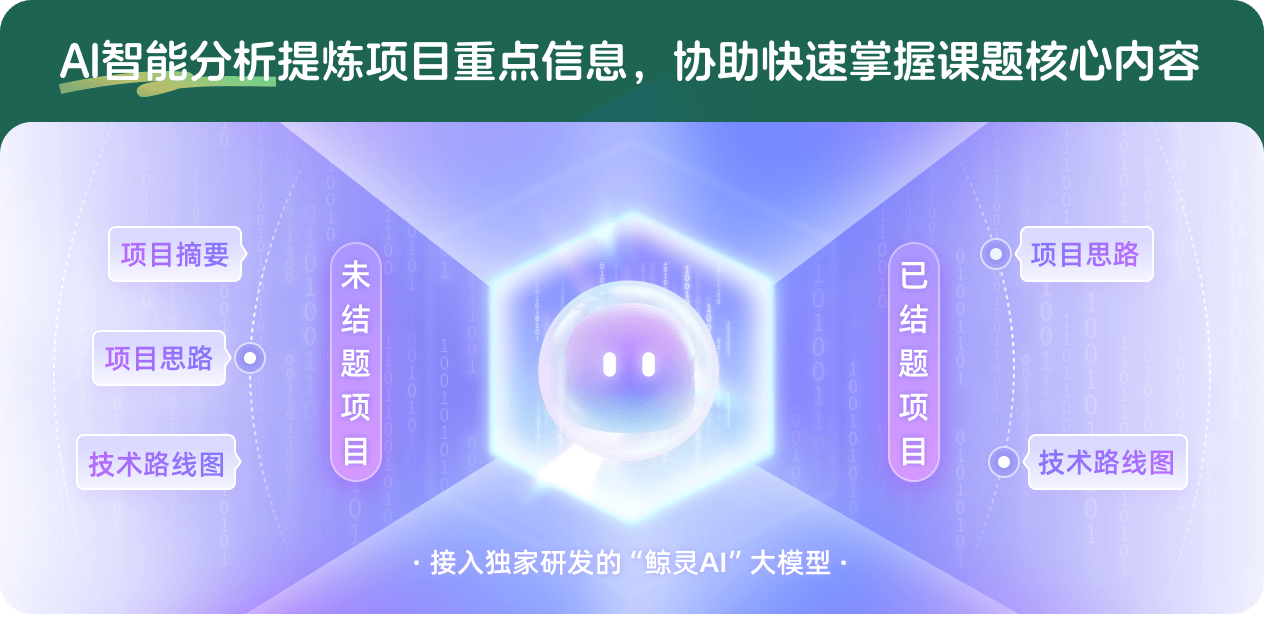利用液态三相分离回收处理废弃电路板多金属资源的机理及其控制研究
项目介绍
AI项目解读
基本信息
- 批准号:51574216
- 项目类别:面上项目
- 资助金额:66.0万
- 负责人:
- 依托单位:
- 学科分类:E0414.材料冶金加工
- 结题年份:2019
- 批准年份:2015
- 项目状态:已结题
- 起止时间:2016-01-01 至2019-12-31
- 项目参与者:Ivan Kaban; 郝红日; 王中原; 孙倩; 李璐; 陈斌;
- 关键词:
项目摘要
With the rapid development of science and technology, the update and replacement of electrical and electronic equipment have been immensely accelerated. The waste electrical and electronic equipment (WEEE) has become one of the fastest growing solid waste. The ever-increasing generation of the WEEE has brought enormous damage on the ecological environment. As a major constituent in WEEE, meanwhile, the waste printed circuit board (WPCB) is a source of valuable metals such as a variety of precious metals and non ferrous metals. The development of resource recycling technology for WPCBs is of great significance not only as regards environmental protection but also for the recovery of valuable materials. Although extensive efforts have been devoted to the metal resource recycling, most of them were focused on the recovery of precious metals. In recent years, a dissociation technology of metal materials from WPCBs has been developed, but these dissociated materials are still a not separated complex metal mixture containing more than ten kinds of valuable metal elements. The separation of the individual metal from the multi-component complex metal mixture remains a challenge. The mechanism of separation, enrichment, and recycling of various metal components could not be understood deeply. Thereby, some problems such as low recovery efficiency, high energy consumption, and secondary pollution are still unsolved. Essentially, the topic of metal separation, purification, and recycling belongs to the field of metallurgical engineering and process control. To our knowledge and previous investigation of liquid-liquid phase separation, and according to the problems of metal resource recycling for multi-component complex metal resource in WPCBs, in this project, we propose an efficient and environment-friendly recycling technology for the complex metal resource on the principle of liquid three-phase separation. Based on the main metal components such as Cu, Fe, and Pb in the complex metal resource, a liquid three-phase-separation Fe-Cu-Pb based system has been created. A model is built to describe the distribution of various metals in the liquid three-phase-separation system. The behavior of liquid phase separation of the Fe-Cu-Pb based system is clarified, and the metal solute distribution and enrichment in the liquid three-phase-separation system and their process control are investigated experimentally and by numerical simulation. In addition, the effects of the technology parameters and procedure on the recovery and enrichment efficiency of these metals are explored. Thereby, the investigation via this project not only develop a new route for the recovery of secondary complex metal resource and thus provides theoretical guidance and original technology for resource treatment of WPCBs, but also reveal the three-phase(zone)-separation mechanism and the formation of solidification microstructure in the Fe-Cu-Pb based alloys.
废弃电路板危害环境却又蕴藏着丰富的金属资源。近年来在资源化技术方面开展了大量研究,发展了从电路板解离金属物料的技术。但这种混合物料仍是由十余种有价金属元素组成的尚未分离的复杂资源,金属的回收往往只青睐于其中的贵金属。由于对多金属混合物分离、富集和循环机理缺乏深入研究,以致废弃电路板金属回收利用率低、二次污染严重等问题。基于申请者多年来对合金液-液相分离过程的认识和研究积累,针对电路板金属资源化技术研究的不足,本项目提出以其主要金属组分设计Fe-Cu-Pb基液相分离系统、利用液态三相分离高效综合回收处理废弃电路板多金属复杂资源的新思路;建立描述多金属组分在液相分离系统中分配的模型,实验与计算相结合,开展合金液态三相分离行为以及多金属组分在液态三相中的分布、富集过程及其控制研究;揭示分离工艺与过程对金属富集率和回收率的影响,为废弃电路板二次金属资源高效绿色回收再利用提供理论指导依据和技术原型。
结项摘要
电子废弃物已经成为一类增速快和处理难的城市固废。电路板是电子产品的关键部件,其年报废量我国2025年将达45万吨。电路板结构复杂、有害组分毒性强,但有价金属含量高,是天然矿山的几十甚至几百倍。电路板在拆解物料中处理难度最大但经济价值最高。针对电路板金属资源化技术关键问题,将热解与金属液态三相分离相结合,本项目提出了废旧电路板金属资源高效、绿色、综合回收的新方法。考察了热解工艺对电路板金属与非金属解离的影响,分析了工艺条件对热解产物及其形成过程的影响。对热解获得的电路板混合多金属组分进行了分析,研究了由其主组分Fe、Cu和Pb组成的Fe-Cu-Pb三元合金的液-液相分离及凝固行为,发现该三元合金熔体在冷却过程中先后发生L → L(Fe) + L(Cu,Pb)和 L’(Cu,Pb) → L(Cu) + L(Pb)两次液-液相分离,最终形成富Fe、富Cu和富Pb三相(区)分离的凝固组织。计算了合金组元液态不混溶区域,建立了热力学模型,理论分析了电路板混合多金属中的其他元素在主金属铁、铜和铅液态三相中的分布规律和富集过程,并建立了提升金属元素分离率和富集率的方法。结果表明,混合多金属中的 Cr、Co、Ni、Si主要富集在富Fe液相中,Zn和贵金属Au、Ag富集在富Cu相中,而低熔点金属Bi、In、Cd、Sn主要富集在富Pb相中。添加少量C,可有效增大Fe/Cu基金属液-液分离率,少量Al可促进Cu/Pb基金属液-液分离率和富集率。基于此,优化设计了混合多金属自组装分级分离系统,建立了熔盐氧化与液-液分离联合处理技术。利用超重场促进混合多金属分层,将十余种组分进行自组装分离分类,金属Cr、Co、Si、Bi、In等的回收率均超过90%,Ni、Cd的回收率超过80%,贵金属Au、Ag的回收率分别可以达到95%和92%。如结合熔盐氧化技术,Al、Pb、Si、Sn和Zn等两性金属的回收率分别可达99.5%、81.6%、97.8%、88.4%和95.7%;而剩余金属液-液分离,其中Cr和Ni富集在富Fe中,Au和Ag富集在富Cu中形成高价值集团,回收率可达98%以上。本研究为废旧电路板金属资源清洁高效循环再利用提供了理论参考和技术原型。
项目成果
期刊论文数量(13)
专著数量(0)
科研奖励数量(1)
会议论文数量(6)
专利数量(3)
Microstructure Formation and Nanoindentation Behavior of Rapidly Solidified Cu-Fe-Zr Immiscible Alloys
快速凝固Cu-Fe-Zr难混溶合金的显微组织形成和纳米压痕行为
- DOI:10.4028/www.scientific.net/msf.993.39
- 发表时间:2020
- 期刊:Materials Science Forum
- 影响因子:--
- 作者:Xiao Jun Sun;Jie He;Jiu Zhou Zhao
- 通讯作者:Jiu Zhou Zhao
Local microstructure evolution at shear bands in metallic glasses with nanoscale phase separation.
具有纳米级相分离的金属玻璃剪切带处的局部微观结构演化
- DOI:10.1038/srep25832
- 发表时间:2016-05-16
- 期刊:Scientific reports
- 影响因子:4.6
- 作者:He J;Kaban I;Mattern N;Song K;Sun B;Zhao J;Kim do H;Eckert J;Greer AL
- 通讯作者:Greer AL
Liquid-Liquid Hierarchical Separation and Metal Recycling of Waste Printed Circuit Boards
废旧印刷电路板液液分级分离及金属回收
- DOI:10.1016/j.jhazmat.2018.10.022
- 发表时间:2019
- 期刊:Journal of Hazardous Materials
- 影响因子:13.6
- 作者:Bin Chen;Jie He;YaoYao Xi;Xiangfeng Zeng;Ivan Kaban;Jiuzhou Zhao;Hongri Hao
- 通讯作者:Hongri Hao
Liquid phase separation and dual glassy structure formation of designed Zr-Ce-Cu-Co alloys
设计的Zr-Ce-Cu-Co合金的液相分离和双玻结构形成
- DOI:10.4028/www.scientific.net/msf.849.100
- 发表时间:2016
- 期刊:Materials Science Forum
- 影响因子:--
- 作者:Z.Y.Wang;J.He;B.J.Yang
- 通讯作者:B.J.Yang
Ni-Based Metallic Glass Composites Containing Cu-Rich Crystalline Nanospheres
含富铜结晶纳米球的镍基金属玻璃复合材料
- DOI:10.1007/s40195-018-0756-y
- 发表时间:2018-06
- 期刊:Acta Metallurgica Sinica (English Letters)
- 影响因子:--
- 作者:Xi Yao-Yao;He Jie;Sun Xiao-Jun;Li Wang;Zhao Jiu-Zhou;Hao Hong-Ri;Xiong Ting
- 通讯作者:Xiong Ting
数据更新时间:{{ journalArticles.updateTime }}
{{
item.title }}
{{ item.translation_title }}
- DOI:{{ item.doi || "--"}}
- 发表时间:{{ item.publish_year || "--" }}
- 期刊:{{ item.journal_name }}
- 影响因子:{{ item.factor || "--"}}
- 作者:{{ item.authors }}
- 通讯作者:{{ item.author }}
数据更新时间:{{ journalArticles.updateTime }}
{{ item.title }}
- 作者:{{ item.authors }}
数据更新时间:{{ monograph.updateTime }}
{{ item.title }}
- 作者:{{ item.authors }}
数据更新时间:{{ sciAawards.updateTime }}
{{ item.title }}
- 作者:{{ item.authors }}
数据更新时间:{{ conferencePapers.updateTime }}
{{ item.title }}
- 作者:{{ item.authors }}
数据更新时间:{{ patent.updateTime }}
其他文献
P2PNavi: A System-Level Algorithmic Solution for Highly Accurate Direction Estimation for Infrastructure-Free Indoor Navigation
P2PNavi:用于无基础设施室内导航的高精度方向估计的系统级算法解决方案
- DOI:10.1109/jsyst.2020.3030769
- 发表时间:2021-06
- 期刊:IEEE SYSTEMS JOURNAL
- 影响因子:4.4
- 作者:徐丽媛;何杰;王鹏;王沁
- 通讯作者:王沁
资本结构选择、内部控制与企业并购绩效——基于A股上市公司的经验研究
- DOI:10.15931/j.cnki.1006-1096.20171129.019
- 发表时间:2018
- 期刊:经济经纬
- 影响因子:--
- 作者:雷卫;何杰
- 通讯作者:何杰
土工格栅复合夯实水泥土桩-土界面接触特性分析
- DOI:--
- 发表时间:2014
- 期刊:湖南工业大学学报
- 影响因子:--
- 作者:曹祚省;何杰;杨彦忠;饶迁根;孟森松
- 通讯作者:孟森松
基于光学和雷达图像的土地覆被分类
- DOI:--
- 发表时间:2015
- 期刊:长江科学院院报
- 影响因子:--
- 作者:王新云;田建;郭艺歌;何杰
- 通讯作者:何杰
路面随机激励时域模型特性的仿真研究
- DOI:--
- 发表时间:--
- 期刊:武汉理工大学学报(交通科学与工程版)
- 影响因子:--
- 作者:何杰;陈一锴;彭佳;毛海军;李旭宏
- 通讯作者:李旭宏
其他文献
{{
item.title }}
{{ item.translation_title }}
- DOI:{{ item.doi || "--" }}
- 发表时间:{{ item.publish_year || "--"}}
- 期刊:{{ item.journal_name }}
- 影响因子:{{ item.factor || "--" }}
- 作者:{{ item.authors }}
- 通讯作者:{{ item.author }}

内容获取失败,请点击重试

查看分析示例
此项目为已结题,我已根据课题信息分析并撰写以下内容,帮您拓宽课题思路:
AI项目摘要
AI项目思路
AI技术路线图

请为本次AI项目解读的内容对您的实用性打分
非常不实用
非常实用
1
2
3
4
5
6
7
8
9
10
您认为此功能如何分析更能满足您的需求,请填写您的反馈:
何杰的其他基金
由液-液相分离制备非晶原位增强金属基复合材料的凝固机理及性能研究
- 批准号:
- 批准年份:2021
- 资助金额:62 万元
- 项目类别:
由液—液相分离制备非晶原位增强金属基复合材料的凝固机理及性能研究
- 批准号:52174380
- 批准年份:2021
- 资助金额:62.00 万元
- 项目类别:面上项目
基于Nd-Fe-Bi合金液-液相分离回收废旧钕铁硼中稀土元素的基础研究
- 批准号:
- 批准年份:2019
- 资助金额:60 万元
- 项目类别:面上项目
凝固亚稳液相分离合金制备新型纳米金属玻璃的组织调控及变形机理
- 批准号:51774264
- 批准年份:2017
- 资助金额:60.0 万元
- 项目类别:面上项目
由难混溶合金制备相分离块体金属玻璃的凝固过程与性能研究
- 批准号:51374194
- 批准年份:2013
- 资助金额:81.0 万元
- 项目类别:面上项目
基于液-液相分离制备金属玻璃基复合材料的研究
- 批准号:50704032
- 批准年份:2007
- 资助金额:19.0 万元
- 项目类别:青年科学基金项目
相似国自然基金
{{ item.name }}
- 批准号:{{ item.ratify_no }}
- 批准年份:{{ item.approval_year }}
- 资助金额:{{ item.support_num }}
- 项目类别:{{ item.project_type }}
相似海外基金
{{
item.name }}
{{ item.translate_name }}
- 批准号:{{ item.ratify_no }}
- 财政年份:{{ item.approval_year }}
- 资助金额:{{ item.support_num }}
- 项目类别:{{ item.project_type }}




















